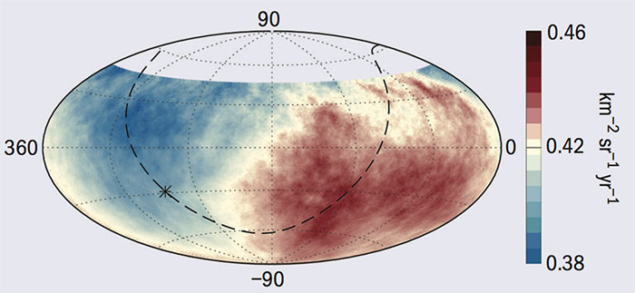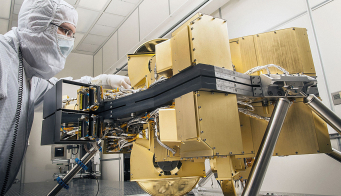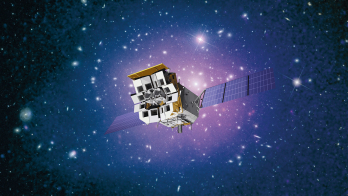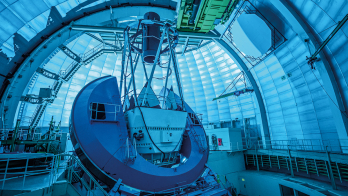
The energy spectrum of cosmic rays continuously bombarding the Earth spans many orders of magnitude, with the highest energy events topping 108 TeV. Where these extreme particles come from, however, has remained a mystery since their discovery more than 50 years ago. Now the Pierre Auger collaboration has published results showing that the arrival direction of ultra-high-energy cosmic rays (UHECRs) is far from uniform, giving a clue to their origins.
The discovery in 1963 at the Vulcano Ranch Experiment of cosmic rays with energies exceeding one million times the energy of the protons in the LHC raised many questions. Not only is the charge of these hadronic particles unknown, but the acceleration mechanisms required to produce UHECRs and the environments that can host these mechanisms are still being debated. Proposed origins include sources in the galactic centre, extreme supernova events, mergers of neutron stars, and extragalactic sources such as blazars. Unlike the case with photons or neutrinos, the arrival direction of charged cosmic rays does not point directly towards their origin because, despite their extreme energies, their paths are deflected by magnetic fields both inside and outside our galaxy. Since the deflection reduces as the energy goes up, however, some UHECRs with the highest energies might still contain information about their arrival direction.
At the Pierre Auger Observatory, cosmic rays are detected using a vast array of detectors spread over an area of 3000 km2 near the town of Malargüe in western Argentina. Like the first cosmic-ray detectors in the 1960s, the array measures the air showers induced as the cosmic rays interact with the atmosphere. The arrival times of the particles, measured with GPS receivers, are used to determine the direction from which the primary particles came within approximately one degree.
The presented dipole measurement is based on a total of 30,000 cosmic rays measured.
The collaboration studied the arrival direction of particles with energies in the range 4-8 EeV and for particles with energies exceeding 8 EeV. In the former data set, no clear anisotropy was observed, whereas for particles with energies above 8 EeV a dipole structure was observed (see figure), indicating that more particles come from a particular part of the sky. Since the maximum of the dipole is outside the galactic plane, the measured anisotropy is consistent with an extragalactic nature. The collaboration reports that the maximum, when taking into account the deflection of magnetic fields, is consistent with a region in the sky known to have a large density of galaxies, supporting the view that UHECRs are produced in other galaxies. The lack of anisotropy at lower energies could be a result of the higher deflection of these particles in the galactic magnetic field.
The presented dipole measurement is based on a total of 30,000 cosmic rays measured by the Pierre Auger Observatory, which is currently being upgraded. Although the results indicate an extragalactic origin, the particular source responsible for accelerating these particles remains unknown. The upgraded observatory will enable more data to be acquired and allow a more detailed investigation of the currently studied energy ranges. It will also open the possibility to explore even higher energies where the magnetic-field deflections become even smaller, making it possible to study the origin of UHECRs, their acceleration mechanism and the magnetic fields that deflect them.








